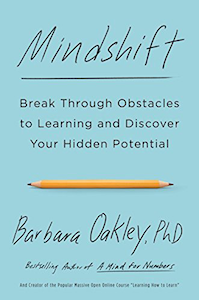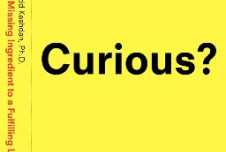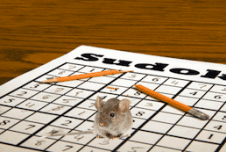People around the world are hungry to learn. Instructor Barbara Oakley discovered this when her online course “Learning How to Learn”—filmed in her basement in front of a green screen—attracted more than 1.5 million students.
Part of the goal of her course—and her new book, Mindshift: Break Through Obstacles to Learning and Discover Your Hidden Potential—is to debunk some of the myths that get in the way of learning, like the belief that we’re bad at math or too old to change careers. These are just artificial obstacles, she argues.

“People can often do more, change more, and learn more—often far more—than they’ve ever dreamed possible. Our potential is hidden in plain sight all around us,” Oakley writes.
She should know: Throughout her early schooling, she flunked math and science classes and resisted family pressure to pursue a science degree. Today? She’s a professor of engineering at Oakland University, after many different jobs in between.
Her book aims to help readers discover their hidden potential, by offering them both the tools and the inspiration to transform themselves through learning.
The benefits of lifelong learning
Besides being fun, Oakley explains, continued learning can serve us well in the workforce. Many professionals today are engaging in a practice called “second-skilling”: gaining a second area of expertise, whether it’s related to their work (like a marketer learning programming) or completely different (a fundraiser training to be a yoga instructor).
When we lose our job, or work just starts to feel unsatisfying, having other skills can give us more choice and flexibility. We can quit our job and find a new one, of course, but we can also choose to move horizontally within the same organization, taking on different responsibilities.
Mindshift tells the story of one Dutch university employee who enriched her career thanks to her passion for online video gaming. Though she didn’t necessarily think of that as a “second skill,” it ended up benefitting her (and her employer) greatly: She became community manager of the university’s online courses, devising strategies to keep digital interactions civil just as she had done in the gaming world. This goes to show, Oakley writes, that we can never tell where our expertise will lead us or where it will come in handy.
Keeping our brains active and engaged in new areas also has cognitive benefits down the line. According to one study, people who knit, sew, quilt, do plumbing or carpentry, play games, use computers, or read have greater cognitive abilities as they age. Other research found that the more education you have, or the more cognitively stimulating activity you engage in, the lower your risk of Alzheimer’s.
Learning could even extend your life. People who read books for more than 3.5 hours a week are 23 percent less likely to die over a 12-year period—a good reason to keep cracking books after college!
Learn how to learn
 Mindshift: Break Through Obstacles to Learning and Discover Your Hidden Potential (TarcherPerigee, 2017, 304 pages)
Mindshift: Break Through Obstacles to Learning and Discover Your Hidden Potential (TarcherPerigee, 2017, 304 pages)
Whether you’re inspired to learn woodworking or web development, Mindshift offers many tips that can make your learning more efficient and enjoyable.
Focus (and don’t focus). In order to absorb information, our brains need periods of intense focus followed by periods of mind-wandering, or “diffuse attention,” Oakley explains. So, learners will actually retain more if they incorporate time for rest and relaxation to allow this processing to happen. Perhaps that’s why aficionados love the Pomodoro technique, which recommends 25-minute bursts of work followed by five-minute breaks.
We should also experiment with different levels of background noise to achieve optimal focus, Oakley advises. Quiet promotes deeper focus, while minor distractions or background noise—like what you’d find at a cafe—may encourage more diffuse attention and creative insight. (While your favorite music could help you get in the zone, music that’s loud, lyrical, or displeasing might be a distraction.)
Practice efficiently. Neuroscience research is now exploring what learning looks like in the brain—and it’s bad news for those of us who loved to cram in college. Apparently the brain can only build so many neurons each night, so regular, repeated practice is crucial.
Oakley recommends learning in “chunks”—bite-sized bits of information or skills, such as a passage in a song, one karate move, or the code for a particular technical command. Practicing these regularly allows them to become second nature, freeing up space in our conscious mind and working memory so we can continue building new knowledge. (If this doesn’t happen, you may have to select a smaller chunk.)
It also helps to practice in a variety of ways, at a variety of times. To understand information more deeply, Oakley recommends actively engaging with it by teaching ourselves aloud or creating mindmaps—web-like drawings connecting different concepts and ideas. We can also try practicing in our downtime (in line at Starbucks or in the car commuting, for example), and quickly reviewing the day’s lessons before going to sleep.
Exercise. One of the most surprising—and easiest—ways to supercharge our learning is to exercise. Physical activity can actually help us grow new brain cells and neurotransmitters; it’s also been shown to improve our long-term memory and reverse age-related declines in brain function. In fact, walking for just 11 minutes a day is enough to reap some benefits.
While clearly informed by neuroscience, Mindshift focuses more on telling stories than explaining research—which makes it a fast read. After hearing so many tales of curiosity and transformation, you yourself may be inspired to pick up that random hobby you’ve fantasized about, or take one of many college-level courses now available online for free (like our very own Science of Happiness course). Me? The one I signed up for starts next week.






Comments